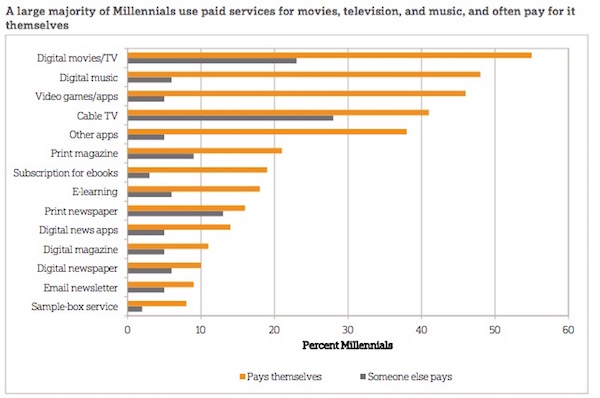“I really wouldn’t pay for any type of news because as a citizen it’s my right to know the news.”
This seems to be a prevailing attitude among Millennials, according to an article in Nieman Lab. And that attitude, asserts Neal Goulet of Goulet Communications, is “directly connected with what’s so wrong with native advertising.”
Goulet frames his article around last summer’s hilarious and brutally true send-up of sponsored content by John Oliver.
“It’s generally agreed upon in journalism that there should be a wall separating the editorial and the business side of news…” Oliver says in the 11 minute clip. Tossing aside the clichéd separation of church and state, Oliver insists it’s more like the separation of guacamole and Twizzlers.
“Separately, they’re good. But if you mix them together, somehow you make both of them really gross.”
Yet someone has to pay for the news. And if the consumers aren’t willing to do it, are we doomed to a future of adver-journalism and click-bait sites like Buzzfeed?
Time Inc. not only blurred the lines, they demolished them by moving their editorial department onto the business side. Conde Nast wrote a tome on how they’ll handle it, and the Wall Street Journal is onboard.
At the end of the day, what happens to the news when the story is framed by the sponsor, rather than an objective look at the truth? While the older generations have grown used to reading the news with a skeptical eye, the younger generation doesn’t seem to realize that there is precious little real “news” in their news feed.
Really, we can’t blame the Millennials for their attitude. Why should they pay for something of so little value or relevance, which is what much of mainstream media has devolved into?
If the heart of journalism – independent editorial control – is gone, what’s left keeping the body alive? There’s got to be a better solution for our news industry. And it better happen soon before we lose an entire generation.

 [/responsive]
[/responsive]